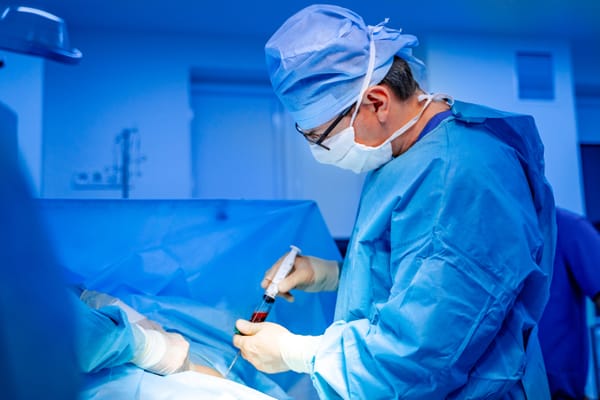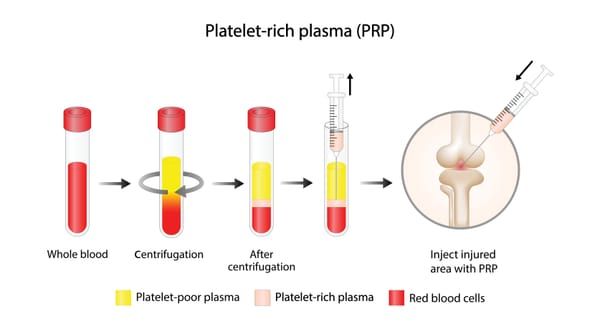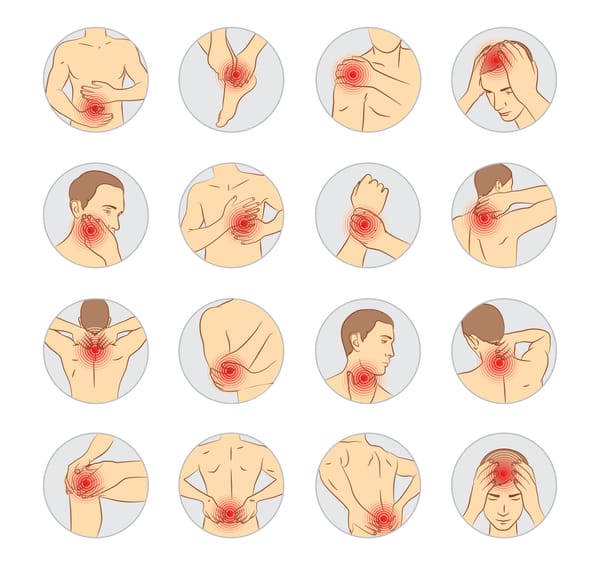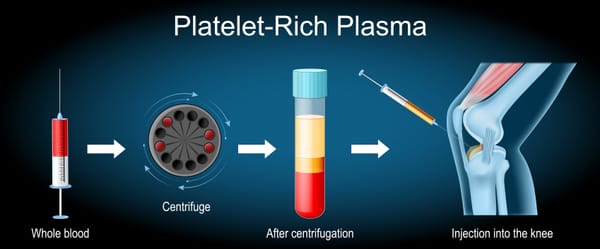Anatomic Pain Generators in the Knee: Pinpointing the Source of Your Discomfort
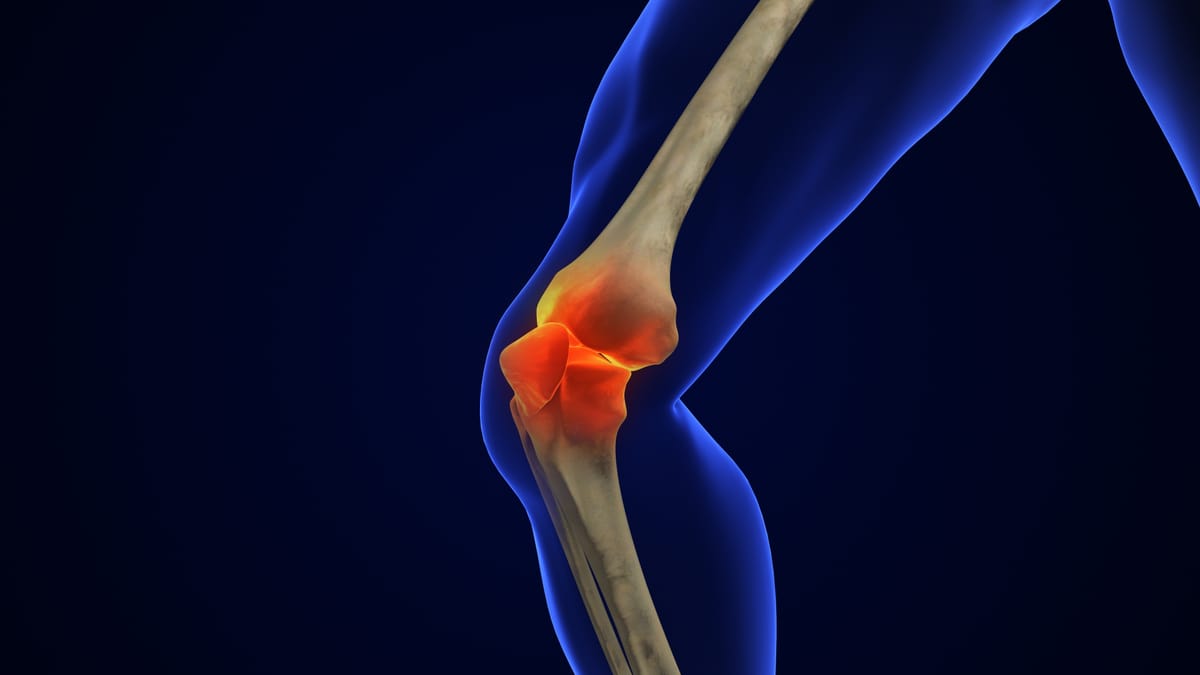
Knee pain is a common complaint that can sideline anyone, from weekend warriors to those simply climbing stairs. The knee’s intricate structure, built to bear weight and enable movement, makes it vulnerable to a range of issues. Identifying the specific anatomic pain generators—structures like cartilage, ligaments, or tendons causing the discomfort—is crucial for effective treatment. In this blog post, we’ll explore the main pain generators in the knee, what triggers their pain, and how they contribute to your symptoms, all explained clearly for a general audience.
The Knee’s Complex Anatomy
The knee is a hinge joint that connects the femur (thigh bone) to the tibia (shin bone), with the patella (kneecap) and fibula (smaller shin bone) playing supporting roles. Its stability and mobility depend on a network of structures:
- Bones: Femur, tibia, patella, and fibula.
- Cartilage: Menisci (shock-absorbing pads) and articular cartilage (smooth joint lining).
- Ligaments: Connect bones, like the ACL (anterior cruciate ligament) and MCL (medial collateral ligament).
- Tendons: Attach muscles to bones, like the quadriceps and patellar tendons.
- Bursae: Fluid-filled sacs that reduce friction.
- Synovium: The joint lining that produces lubricating fluid.
When any of these structures become injured, inflamed, or degenerated, they can act as pain generators, causing symptoms from mild stiffness to debilitating pain. Let’s break down the key culprits.
Common Anatomic Pain Generators in the Knee1. Menisci (Medial and Lateral)
- What They Are: C-shaped cartilage discs that cushion the knee and absorb shock between the femur and tibia.
- Why They Hurt: Pain arises from:
- Meniscal Tears: Caused by twisting injuries (e.g., sports pivots), trauma, or degenerative wear in older adults.
- Degeneration: Gradual breakdown from repetitive stress or aging.
- Symptoms: Sharp pain with twisting or squatting, locking or catching sensations, swelling, or difficulty fully bending/straightening the knee.
- Prevalence: Meniscal injuries affect 10-20% of adults, with tears being more common in athletes and those over 40, per a 2017 study in The American Journal of Sports Medicine.
2. Articular Cartilage
- What It Is: Smooth, slippery tissue covering the ends of the femur, tibia, and patella, allowing frictionless joint movement.
- Why It Hurts: Pain stems from:
- Osteoarthritis: Cartilage wears away, causing bone-on-bone friction.
- Chondral Defects: Localized cartilage damage from trauma or overuse.
- Chondromalacia Patellae: Softening or breakdown of cartilage under the kneecap, often in young adults.
- Symptoms: Deep, aching pain, stiffness, grinding sensations, or swelling, worse with weight-bearing activities like walking.
- Prevalence: Knee osteoarthritis affects 14% of adults over 25, per a 2020 study in Arthritis & Rheumatology, while chondromalacia is common in 20-30% of young athletes.
3. Ligaments (ACL, PCL, MCL, LCL)
- What They Are: Strong bands stabilizing the knee, including the anterior cruciate ligament (ACL), posterior cruciate ligament (PCL), medial collateral ligament (MCL), and lateral collateral ligament (LCL).
- Why They Hurt: Pain results from:
- Sprains or Tears: Sudden twists (e.g., ACL tears in sports) or direct blows (e.g., MCL injuries from side impacts).
- Chronic Instability: Partial tears or untreated injuries causing ongoing stress.
- Symptoms: Sharp pain at injury, swelling, instability (feeling the knee “give out”), or difficulty bearing weight.
- Prevalence: ACL injuries occur in 100,000-200,000 people annually in the U.S., per a 2019 study in Journal of Athletic Training, with MCL sprains being even more common.
4. Tendons (Quadriceps and Patellar)
- What They Are: Tough cords connecting muscles to bones, with the quadriceps tendon linking the thigh muscles to the patella and the patellar tendon connecting the patella to the tibia.
- Why They Hurt: Pain arises from:
- Tendinitis: Inflammation from overuse, like in runners or jumpers (e.g., “jumper’s knee” for patellar tendinitis).
- Tears: Partial or complete ruptures from trauma or chronic degeneration.
- Symptoms: Pain just above or below the kneecap, stiffness, or weakness, worse with running, jumping, or climbing stairs.
- Prevalence: Patellar tendinitis affects 20-30% of athletes in jumping sports, per a 2018 study in Sports Medicine.
5. Bursae
- What They Are: Small sacs filled with fluid that reduce friction around the knee, such as the prepatellar bursa (front of the kneecap) or infrapatellar bursa (below the kneecap).
- Why They Hurt: Bursitis occurs from repetitive pressure (e.g., kneeling), trauma, or infection, causing inflammation.
- Symptoms: Localized swelling, warmth, tenderness, or pain with movement or pressure.
- Prevalence: Prepatellar bursitis, often called “housemaid’s knee,” is common in occupations involving kneeling, affecting 10-15% of such workers, per a 2021 review in Occupational Medicine.
6. Patellofemoral Joint
- What It Is: The area where the patella glides over the femur, stabilized by muscles, tendons, and ligaments.
- Why It Hurts: Pain comes from:
- Patellofemoral Pain Syndrome (PFPS): Misalignment or overuse causing pain under or around the kneecap, often in runners or young adults.
- Patellar Instability: The kneecap dislocates or tracks improperly due to weak muscles or ligament laxity.
- Symptoms: Dull, aching pain behind the kneecap, worse with sitting, squatting, or stair-climbing, sometimes with grinding sensations.
- Prevalence: PFPS affects 15-25% of active young adults, especially women, per a 2019 study in Journal of Orthopaedic & Sports Physical Therapy.
7. Synovium and Joint Effusion
- What It Is: The synovial membrane lines the joint and produces fluid to lubricate it.
- Why It Hurts: Synovitis (inflammation of the synovium) or joint effusion (excess fluid) occurs from arthritis, injury, or infection, causing swelling and pressure.
- Symptoms: Swollen, warm, or stiff knee, with pain during movement or rest.
- Prevalence: Synovitis is common in rheumatoid arthritis (affecting 1-2% of adults) and post-injury, per a 2020 review in Rheumatology.
8. Nerves
- What They Are: Nerves like the femoral, sciatic, or peroneal branches supplying sensation and motor function to the knee.
- Why They Hurt: Nerve irritation or compression from trauma, inflammation, or referred pain from the lower back (e.g., sciatica) can cause knee pain. Less commonly, nerve entrapment (e.g., peroneal nerve) is involved.
- Symptoms: Burning, tingling, or radiating pain, sometimes with numbness or weakness.
- Prevalence: Nerve-related knee pain accounts for 5-10% of cases, often linked to lumbar spine issues, per a 2018 study in Pain Physician.
9. Referred Pain (Non-Knee Sources)
- What It Is: Pain felt in the knee but originating elsewhere, like the hip, lower back, or even blood vessels.
- Why It Hurts: Conditions like hip arthritis, lumbar disc herniation, or vascular issues (e.g., blood clots) can mimic knee pain.
- Symptoms: Vague, aching pain, often with symptoms in the hip, back, or leg, and no clear knee injury.
- Prevalence: Referred pain contributes to 10-15% of knee pain cases, per a 2021 study in American Journal of Medicine.
Diagnosing Knee Pain Generators
Identifying the exact pain generator requires a comprehensive approach:
- Medical History: Details about the pain’s onset, activities (e.g., sports or falls), and prior injuries.
- Physical Exam: Tests like pressing on the knee, checking range of motion, or stressing ligaments (e.g., Lachman test for ACL).
- Imaging: X-rays for bones, MRIs for soft tissues, or ultrasound for dynamic assessment of tendons or bursae.
- Diagnostic Injections: Injecting anesthetic into a suspected structure (e.g., joint or bursa) can confirm it as the pain source if relief follows.
A 2022 study in British Journal of Sports Medicine found that combining clinical exams with MRI or ultrasound improves diagnostic accuracy for meniscal and ligament injuries by 80-90%.
Managing Knee Pain Generators
Treatment varies by pain generator but often starts conservatively:
- Rest and Activity Modification: Avoiding aggravating activities while maintaining gentle movement.
- Physical Therapy: Strengthening quadriceps, improving flexibility, or correcting patellar tracking.
- Medications: NSAIDs (e.g., ibuprofen) or analgesics for pain and inflammation.
- Injections: Ultrasound-guided corticosteroid, hyaluronic acid, or platelet-rich plasma (PRP) injections to reduce inflammation or promote healing.
- Surgery: For severe cases, like large meniscal tears or ACL ruptures, procedures like arthroscopy or ligament reconstruction may be needed.
For example, patellofemoral pain syndrome may improve with physical therapy and bracing, while a torn meniscus might require arthroscopic repair. A team approach, including orthopedists, physical therapists, and pain specialists, often works best.
Living with Knee Pain
Knee pain can disrupt your routine, making it hard to walk, work, or enjoy hobbies. Understanding the pain generator helps you and your doctor target treatment effectively. Keep a symptom log, ask about imaging or specialist referrals, and connect with communities through organizations like the Arthritis Foundation or online forums like Reddit for support and shared experiences.
Why Awareness MattersKnee pain is widespread—affecting 25% of adults at some point, per a 2019 study in Osteoarthritis and Cartilage—but its causes are diverse. Recognizing the anatomic pain generators demystifies the condition, paving the way for accurate diagnosis and tailored treatment.
If knee pain persists, don’t brush it off. See a healthcare provider to uncover the source and start the right plan.By shedding light on the knee’s pain generators, we can empower those affected to take control of their health and move toward relief. Let’s keep the conversation going—no one should limp through life alone.
Disclaimer: This blog post is for informational purposes only and not a substitute for professional medical advice. Always consult a healthcare provider for diagnosis and treatment of knee pain.
